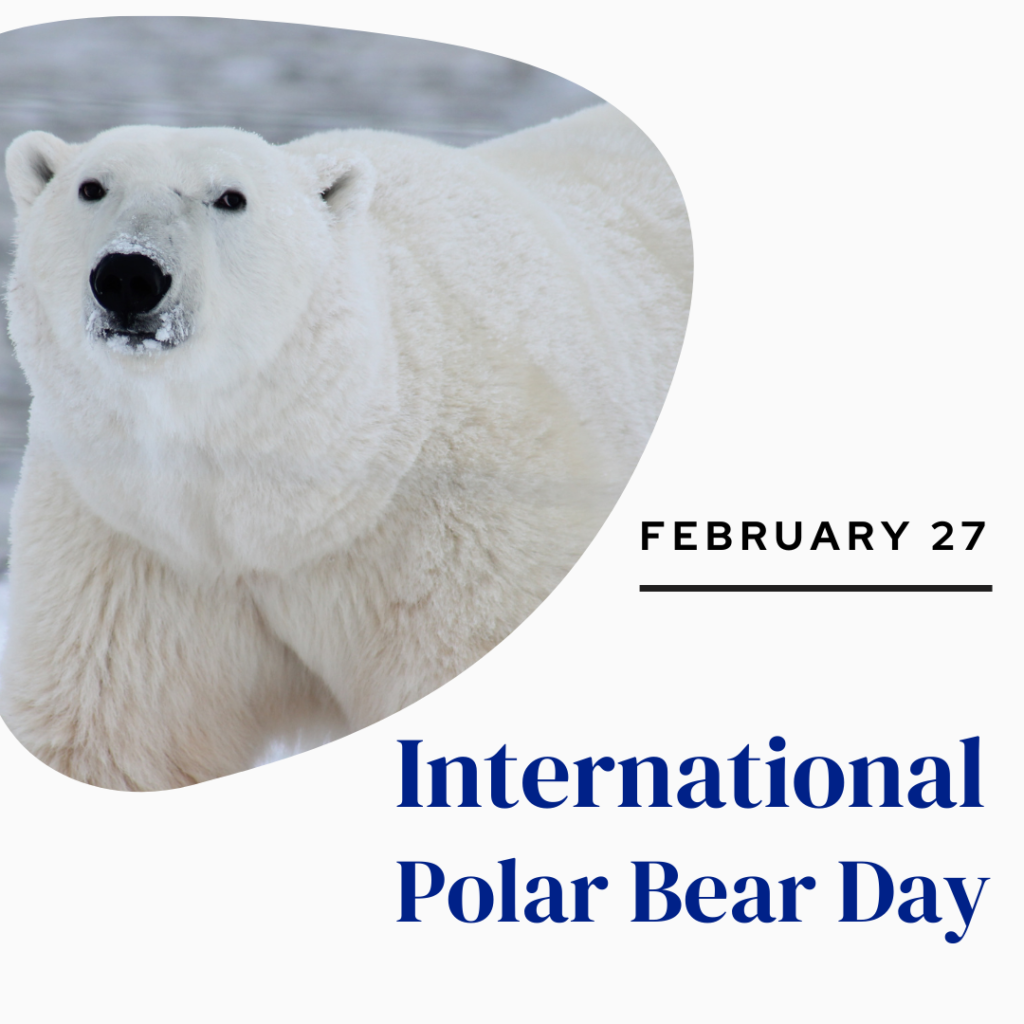International Polar Bear Day is celebrated every year on February 27. It is observed to raise awareness about the challenges faced by polar bears in a warming arctic and show support for actions to ensure their future. Toxic pollution, oil exploration, climate change, and loss of sea ice habitat are the main threats to their survival. International Polar Bear Day provides an opportunity to create awareness and show concern about the plight of these furry arctic creatures. You can celebrate this day by creating awareness about global warming and its causes. You can also donate to an organization working for the wellbeing of polar bears.
International Polar Bear Day will be celebrated on Thursday, February 27, 2025.

Interesting Facts About Polar Bears
Let’s find out more about these marvelous creatures on International Polar Bear Day.
Did you know that polar bears are the largest terrestrial carnivores on earth?
They have 3 eyelids, 42 razor-sharp teeth, and a Blue tongue.
These magnificent creatures of the far north have 4 inches of fat under their skin to keep them warm
Their fur is not white and the color of their skin is black. They look white because the light bounces off their hollow hair.
Their diet mainly consists of ringed seals, making them the most carnivorous member of the bear family.
They hunt the seals by keeping perfectly still by a seal’s breathing hole. They sometimes have to wait for days for a seal to pop up to breathe the air.
These majestic beasts can measure 9 feet from nose to tail and can weigh over 700 kg, making them the largest bears in the world.
Their stomach can hold food up to 20% of their body weight.
Their 30 cm wide paws help them move on the snow. They can attain a top speed of 40 km/h on land.
Their digestive system is designed to help them keep warm in the arid arctic environment as it absorbs about 84% of the protein and 97% of the fat the polar bear consumes.
Did you know that their paws are slightly webbed to help them swim?
These talented swimmers can sustain a pace of 6 mph while swimming.
These Arctic’s top predators spend over 50% of their time hunting for food.
Related Events



